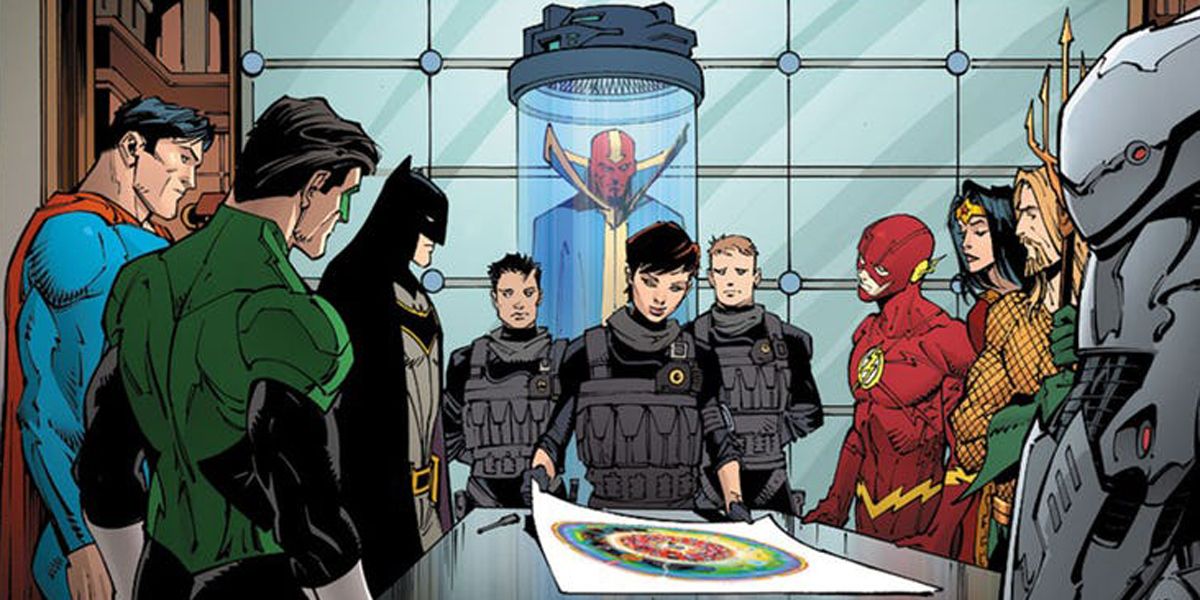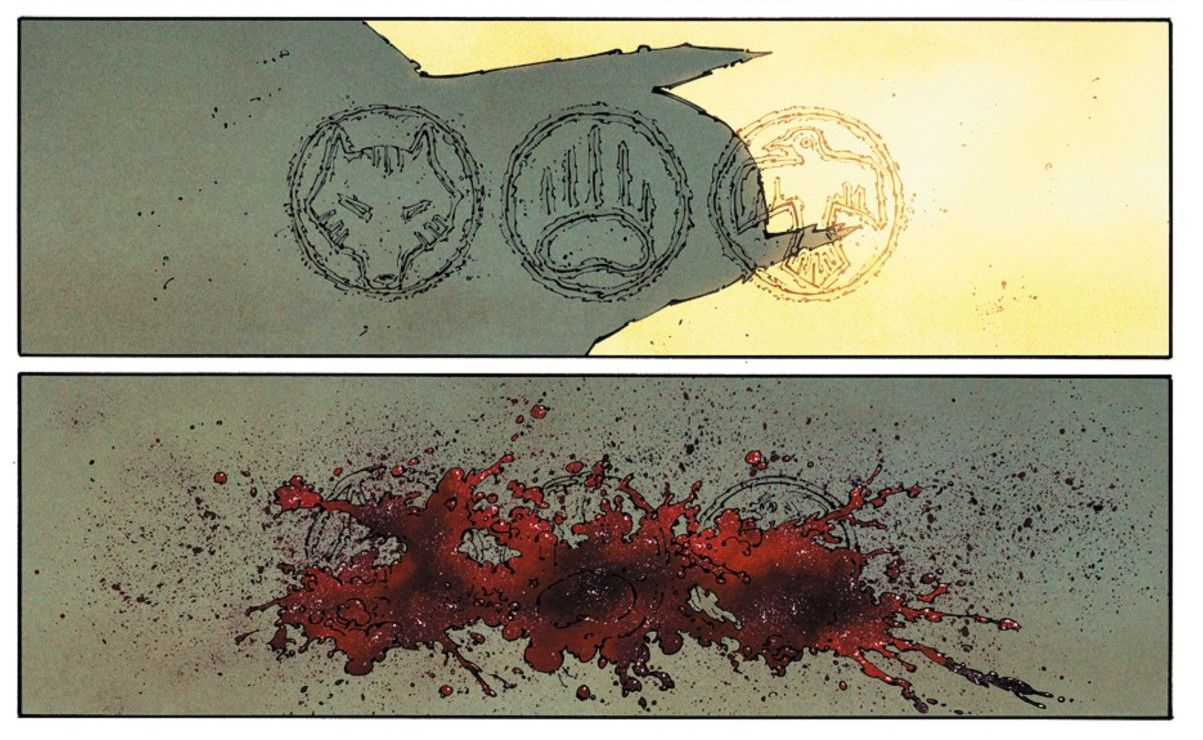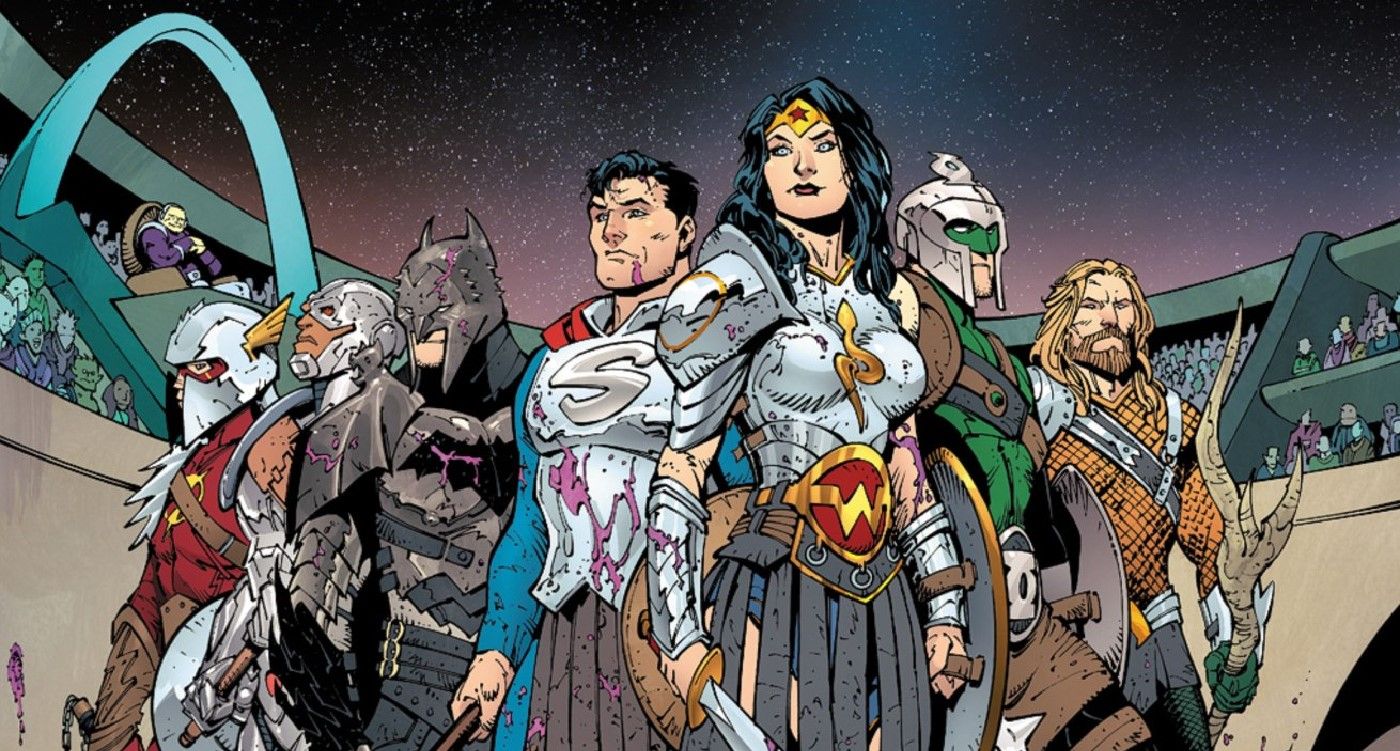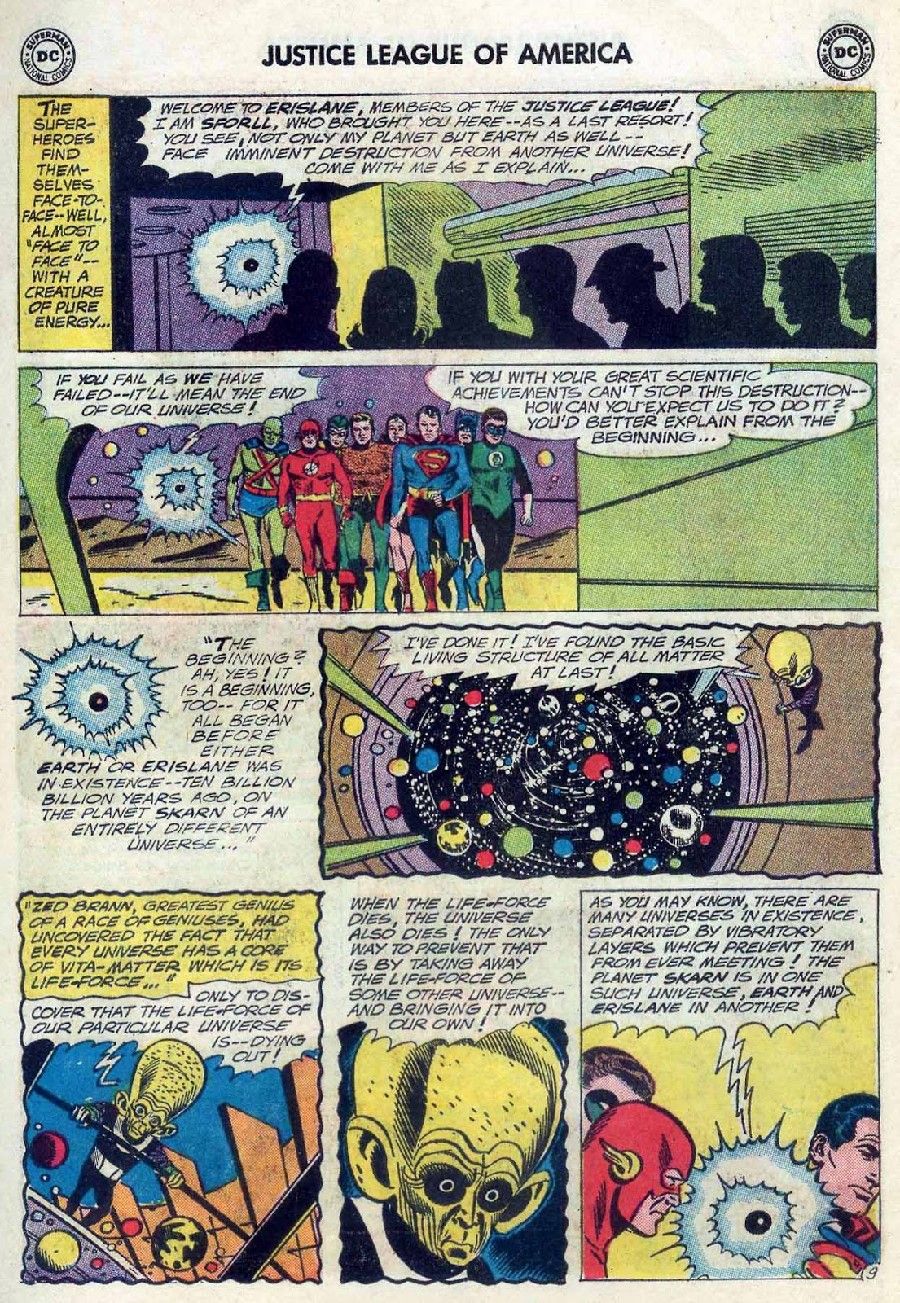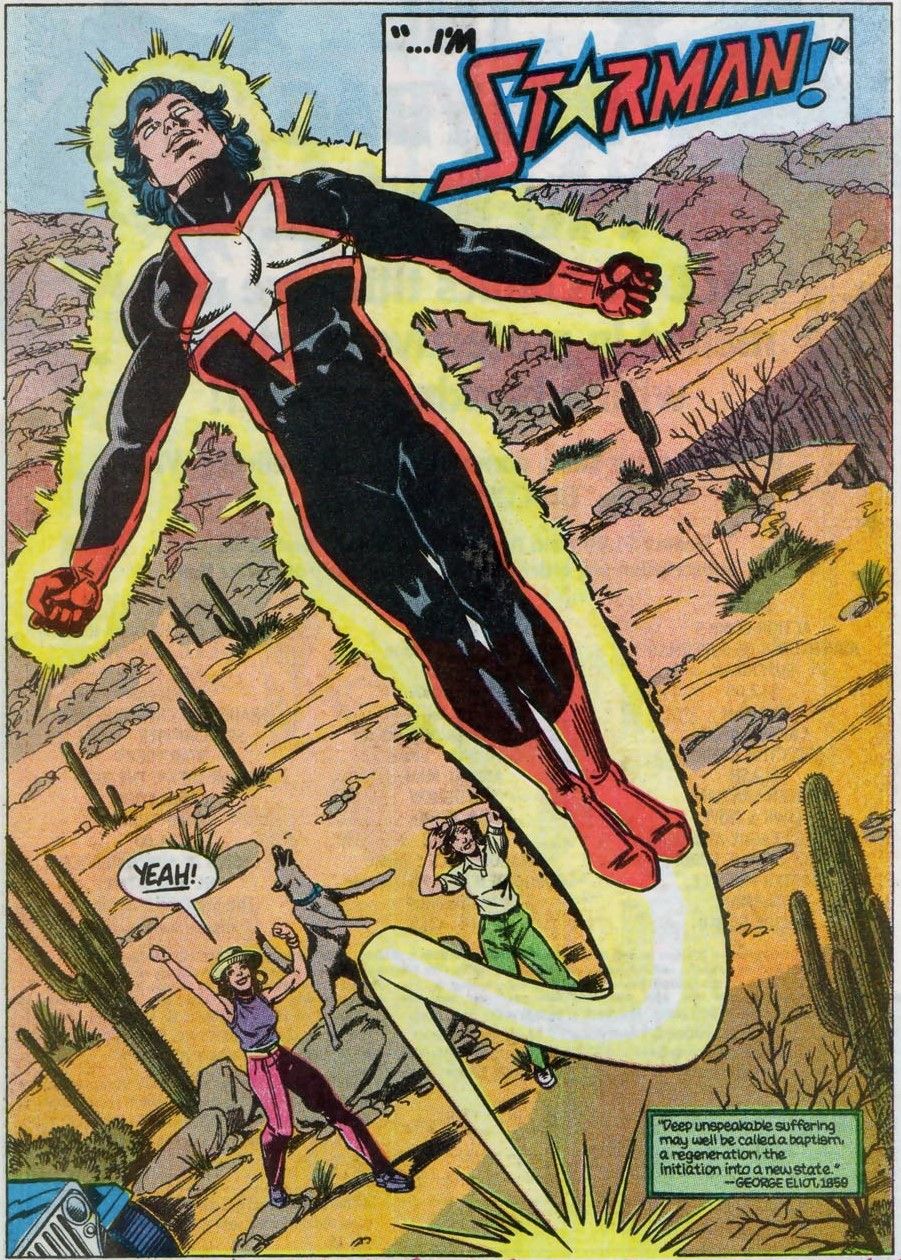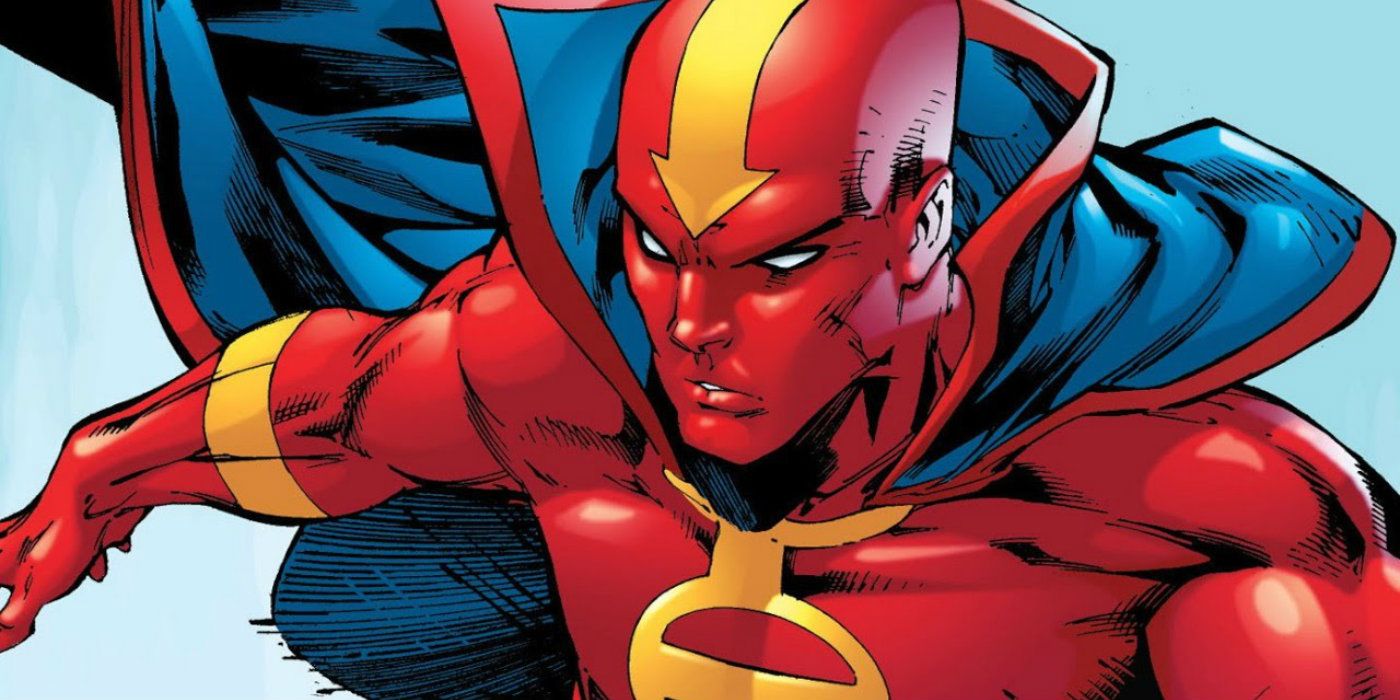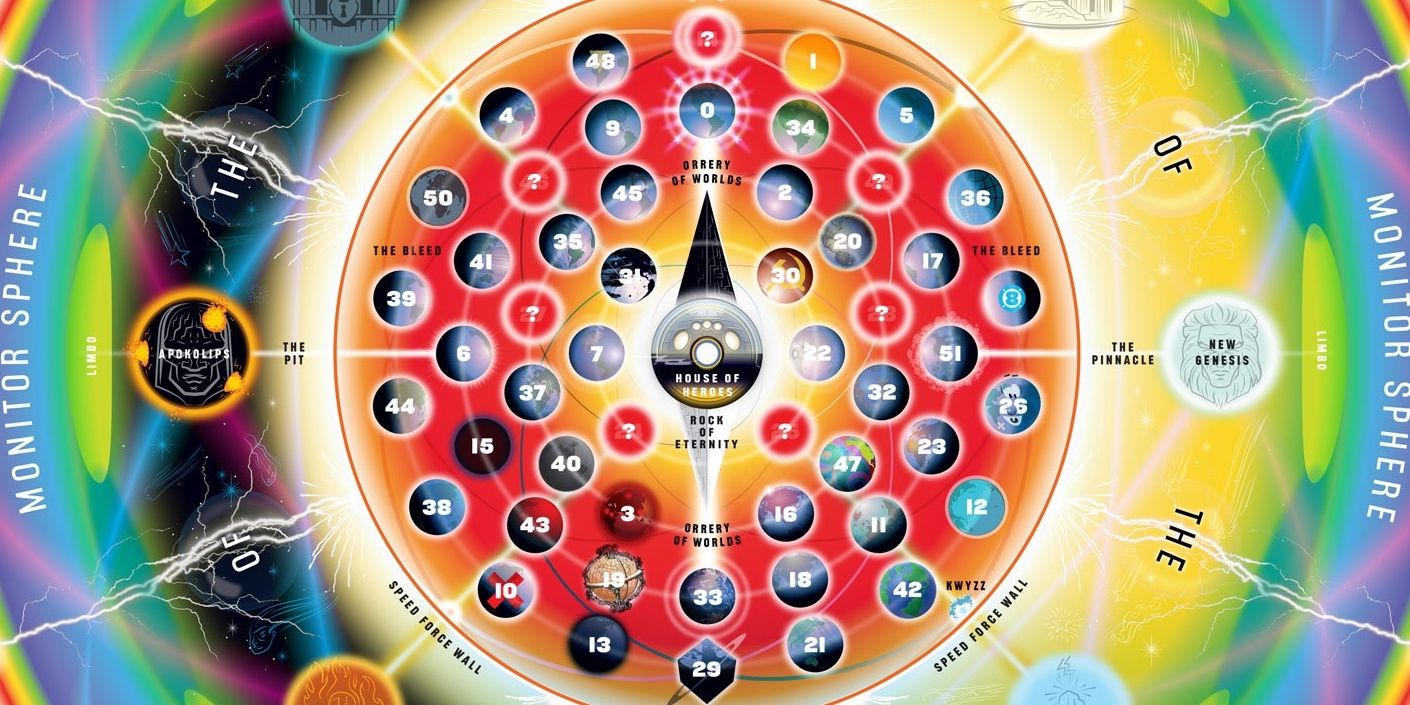Although Dark Days: The Casting goes on sale Wednesday, we're pretty excited about the eight-page unlettered preview DC Comics released for the August debut issue of Dark Nights: Metal, the Batman-led event by writer Scott Snyder and artist Greg Capullo that promises to pull in virtually ever corner of the DC Universe.
To tide you over until The Casting arrives, and to get your brains in the proper analytical mood, here are some brief annotations on the Dark Nights: Metal preview.
Bat Beats Wolf, Bear, Hawk and Lizard (Page 1)
Dark Days: The Forge introduced readers to the Wolf, Bear and Hawk clans/tribes, setting them up as three groups that have played an eons-old role in human development. It then postulated a Bat Tribe coexisting alongside all three. The first page of the Metal preview shows the Bat's apparent antagonism toward Wolf, Bear and Hawk. At the risk of turning this into Rock-Paper-Scissors-Lizard-Batman, we note that Scott Snyder and Greg Capullo depicted an owl killing a bat early in the "Court of Owls" arc of Batman, so an antagonistic bat-creature here would have a thematic precedent. The evil Bat-analogues promised for the fall certainly look as if they could each leave behind trails of (someone else's) blood.
RELATED: Dark Days: The Forge, Annotated -- Part 1
In any event, we're not sure how the lizard figures into this ecological hierarchy. At first glance it looks like the lizard's guts are spilled over the sandy symbols. However, we think it's more likely that the final panel shows the blood of the bat-shadowed figure obscuring the symbols after he/she/it has passed by.
JLA = Justice League in Armor (Pages 2-3)
Getting right to the point of "metal," Page 2 starts with a previously seen image of the armored Justice League, with Wonder Woman front and center (and, not surprisingly, looking fairly comfortable in her duds). While we're not going to guess at specific influences, obviously these armored suits have both a medieval flair and accents reflecting the Leaguers' normal costumes. Nevertheless, Wonder Woman's breastplate sports a snake instead of one of her usual symbols. Does that have something to do with lizard on Page 1? We may have to wait for the full issue.
RELATED: DC Comics' Dark Days: The Forge, Annotated -- Part 2
Mongul's presence and cheerful demeanor tells us we're most likely in a gladiatorial arena on Warworld, his gargantuan moon-sized space station. Page 3's layout suggests further that the customized armor may come from Mongul, perhaps to nullify the Leaguers' powers even as it ostensibly protects them. However, the heroes may get help from a hidden ally, because to us it looks like Billy "Don't Call Me Captain Marvel" Batson is Mongul's guest of honor. Although his alter ego of Shazam became prominent in the New 52 (particularly as a Leaguer), he hasn't been seen much since Rebirth launched last year.
The Silver Isn't Just in the Armor (Pages 4-5)
As the battle rages on Page 4, the League appears to be fighting mechanized versions of themselves. (In particular, Batman's foe resembles the Dark Knight's own Capullo-designed "Justice Buster" battlesuit.) This reminded us of a Silver Age JLA story, "Riddle of the Robot Justice League!" from August 1962's Justice League of America #13. Written by Gardner Fox and drawn by Mike Sekowsky, the issue found the Leaguers abducted by a mysterious extraterrestrial and forced to battle robot duplicates in an arena on a distant planet. It was the last resort for their captor, Sporll of the planet Erislane, who "face[d] imminent destruction from another universe!" Sporll wanted to stop a cycle that had begun countless ages ago, as a scientist from planet Skarn discovered how to suck the "vita-force" out of each universe in order to replenish its own supply.
Naturally the Leaguers beat their mechanized counterparts, but not (as longtime JLA readers might have suspected) by switching opponents. Instead, the key turned out to be Aquaman, who had no robot duplicate because there was no water on Skarn. The Sea King ended up "coaching" his teammates to victory, perhaps foreshadowing the role Billy Batson (or whoever) will play in Metal's gladiatorial match.
Challengers, Blackhawks, Androids and Starmen (Pages 6-8)
We're thinking the first panel of Page 6 (which is actually a double-page spread, but we'll keep this simple) depicts Challengers Mountain, longtime headquarters of the Challengers of the Unknown. That's a version of the Challengers' hourglass symbol in the final two panels. Mountain and cave lairs were pretty common in the Silver Age. Besides the Batcave and Fortress of Solitude, the JLA and Teen Titans each had headquarters carved out of mountainsides in the boondocks. Aquaman had the Aquacave and Green Arrow got an Arrowcave. The Silver Age Atom's origin even depended on getting stuck in a cave! If you couldn't get a mountain or cave (or a cave in the side of a mountain), maybe you could find an island, like the Amazons or (as discussed in the Forge annotations) the Blackhawks.
RELATED: Scott Snyder Opens Up About Dark Nights: Metal's Biggest Mysteries
Most of the Challengers – June Robbins, Rocky Davis, Red Ryan and Ace Morgan – appear alongside the Red Tornado in Page 7's third panel. ("Prof" Haley seems to be mostly off-panel.) Red Tornado can also be seen in the background of the previous panel, alongside what we presume are his creator, Dr. Thomas Oscar "T.O." Morrow, and the Metal Men's creator Dr. Will Magnus. We think that's Magnus because those look like Metal Men prototypes behind him. It almost goes without saying that all these characters are practically Silver Age poster children. Created by Jack Kirby, the Challengers appeared first in Showcase #6 (February 1957), just a few months after Barry "Flash" Allen's debut. The android Red Tornado hailed originally from Earth-Two (although he was created by a native of Earth-One) and was introduced in August 1968's Justice League of America #64 (written by Gardner Fox and penciled by Dick Dillin). T.O. Morrow was created by John Broome and Carmine Infantino, and first appeared in March 1964's Flash #143. Will Magnus and the Metal Men were created by Bob Kanigher and Ross Andru, and debuted in March-April 1962's Showcase #37.
Pairing Reddy and the Challs – which would be a very funky Elton John tribute band – is unusual, but we see a connection. The pre-Flashpoint Challengers were last seen in the pages of Brave and the Bold #12 (June 2008), as writer Mark Waid and artists Jerry Ordway and Bob Wiacek sent them off to look for a missing colleague. It's entirely possible that they could have gotten lost in the Multiverse. In issues #6-8 of the New 52's DC Universe Presents anthology (April-June 2012), writer Dan DiDio and penciller Jerry Ordway revamped the Challengers as reality-show stars, but that interpretation doesn't seem to have gotten much traction. As for Red Tornado, the 52 miniseries established that he had a connection to the reconstituted 52-part Multiverse, since all he could say for a while was "52." Eventually, Rip Hunter connected Reddy's head to his Time Bubble as a navigational aid. Accordingly, we wouldn't be surprised if the pre-Flashpoint Challengers had run into Red Tornado during their Multiversal quest.
While the traditional version of Red Tornado hasn't been seen in the New 52, T.O. Morrow was there right from the start, as a STAR Labs scientist who (in February 2012's Justice League #4) helped Victor Stone acclimate to his new cyborg parts. The New 52's Red Tornado was an Earth-2 android inhabited by the consciousness of Earth-2's Lois Lane (thought killed during an Apokoliptian invasion). Accordingly, the Red Tornado in the glass cylinder looks to be the return of the android hero in his classic form. This isn't even the first time Reddy's been inert indefinitely, since he was in a similar state in the JLA: World Without Grown-Ups miniseries that led into Young Justice.
As if all that weren't enough, Page 7's first panel is where things get interesting. The presence in the first portrait of Janos "Blackhawk" Prohaska and Zinda "Lady Blackhawk" Blake suggests that the traditional Blackhawks existed (once again?) in the Rebirthed DC Universe, perhaps as forerunners to the New 52 version. However, our tour guide and her associates on Page 8 are part of the newest Blackhawk incarnation, seen most recently in All-Star Batman #8. Hawkman is getting a lot of attention in the Dark Days preludes, but we might end up with a revived set of Blackhawks as well.
The portrait next to the Blackhawks really gets our aged fannish hearts pumping, because it's Will Payton, aka Starman, who was created by Roger Stern and Tom Lyle and headlined his own series from October 1988-April 1992 (45 issues). He was the fifth Starman, in between Prince Gavyn and David Knight. Of course, all that is pre-Flashpoint lore, because as far as we know – and with all due respect to Courtney "Stargirl" Whitmore and her New 52 incarnation – the New 52 had no Starman legacy. Hawkman's reconstituted past is one of the biggest signs that the old continuity is coming back, but bringing back the Starmen would be an equally huge step. (Bringing back Will would almost certainly involve bringing back Gavyn, since the next Starman series revealed that Will's powers came from absorbing Gavyn's life-energy.) In the 1990s heyday of DC's legacy structure, Wally "Flash" West and Jack "Starman" Knight headlined the books which arguably depended the most on their legacies. If DC is serious about re-establishing that structure, the Flash and Starman legacies are two of its richest.
Off the Grid (Page 8)
The preview's final page reintroduces readers to the map of the Multiverse from 2014-15's Grant Morrison-written Multiversity miniseries. It lays out just about every realm in DC's cosmos, from the Multiverse's 52 parallel worlds – not all of which have been charted – to the Dreaming, Heaven and Hell, the Fourth World, the Rock of Eternity and the boundaries of the Speed Force and the Source. The 52-part Multiverse debuted just over ten years ago at the end of 2006–07's 52 miniseries; but evidently the reality-warping which created the New 52 tweaked it. (For example, it changed Earth-2 pretty drastically.) We don't really care about the differences, except to say that Multiversity tried to bridge the gap between the pre-Flashpoint continuity and the New 52.
Regardless, the point of Page 8 is to show the Leaguers that they're going someplace which literally is not on the map. Specifically, it's the map's flip side – an aspect of a map you don't see, and yet it enables the map itself to exist, because the map has to have a back in order to have a front. We know that's very "have you really looked at your hands," but we think it gets to the whole idea of a Dark Multiverse. Naturally The Flash is weighing in on Multiversal matters, because speedsters are some of the few beings who can travel to parallel universes unaided.
It's all consistent with a wide-ranging journey across the uncharted areas of DC's sprawling cosmos. Here's hoping the finished issue is as fun to dig into as this preview has been. With all Metal's hype, we expect to have our minds blown like a cheap set of speakers.
Dark Nights: Metal #1, by Scott Snyder and Greg Capullo, goes on sale Aug. 16 from DC Comics.

